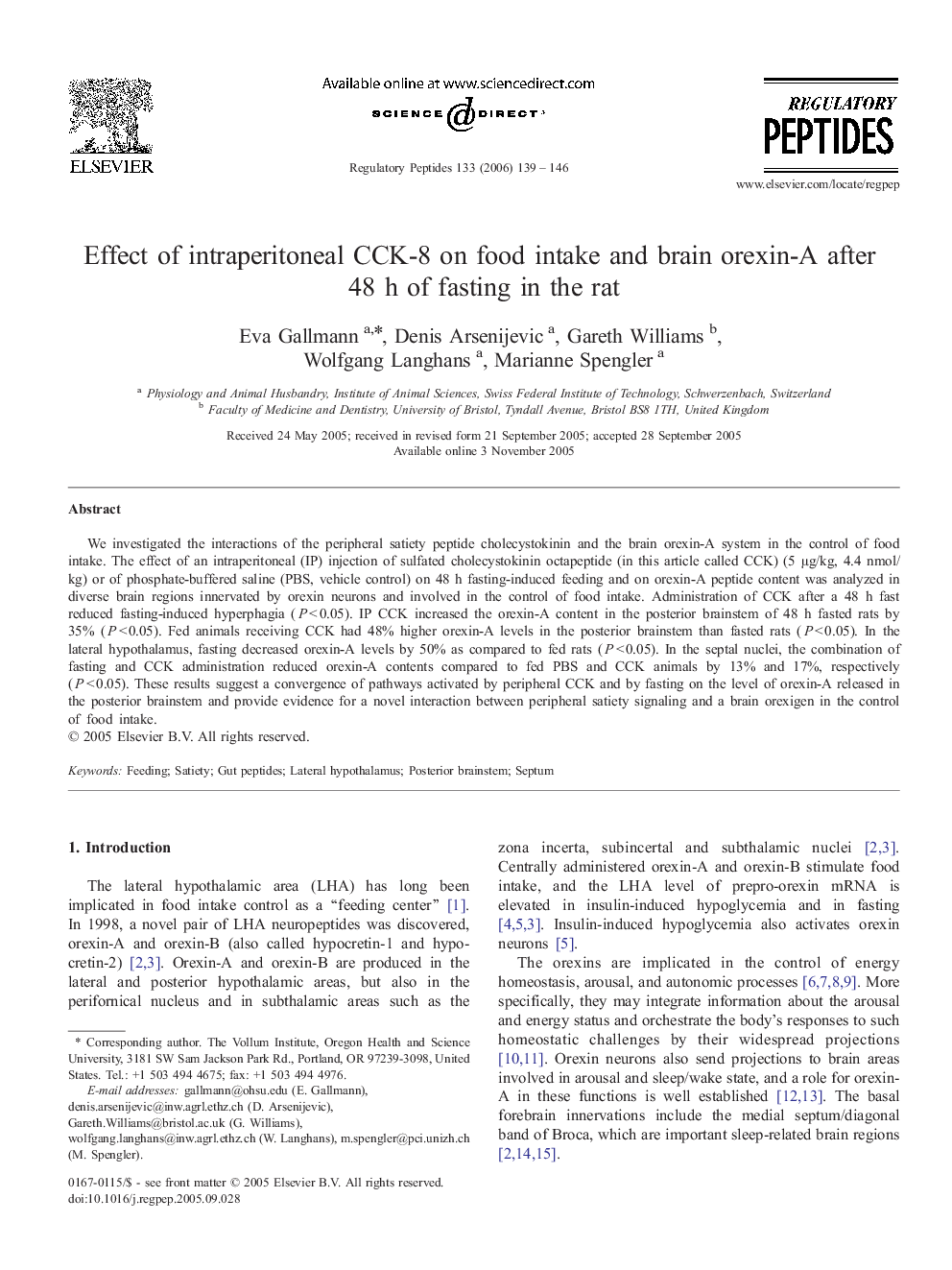| Article ID | Journal | Published Year | Pages | File Type |
|---|---|---|---|---|
| 2023427 | Regulatory Peptides | 2006 | 8 Pages |
We investigated the interactions of the peripheral satiety peptide cholecystokinin and the brain orexin-A system in the control of food intake. The effect of an intraperitoneal (IP) injection of sulfated cholecystokinin octapeptide (in this article called CCK) (5 μg/kg, 4.4 nmol/kg) or of phosphate-buffered saline (PBS, vehicle control) on 48 h fasting-induced feeding and on orexin-A peptide content was analyzed in diverse brain regions innervated by orexin neurons and involved in the control of food intake. Administration of CCK after a 48 h fast reduced fasting-induced hyperphagia (P < 0.05). IP CCK increased the orexin-A content in the posterior brainstem of 48 h fasted rats by 35% (P < 0.05). Fed animals receiving CCK had 48% higher orexin-A levels in the posterior brainstem than fasted rats (P < 0.05). In the lateral hypothalamus, fasting decreased orexin-A levels by 50% as compared to fed rats (P < 0.05). In the septal nuclei, the combination of fasting and CCK administration reduced orexin-A contents compared to fed PBS and CCK animals by 13% and 17%, respectively (P < 0.05). These results suggest a convergence of pathways activated by peripheral CCK and by fasting on the level of orexin-A released in the posterior brainstem and provide evidence for a novel interaction between peripheral satiety signaling and a brain orexigen in the control of food intake.
